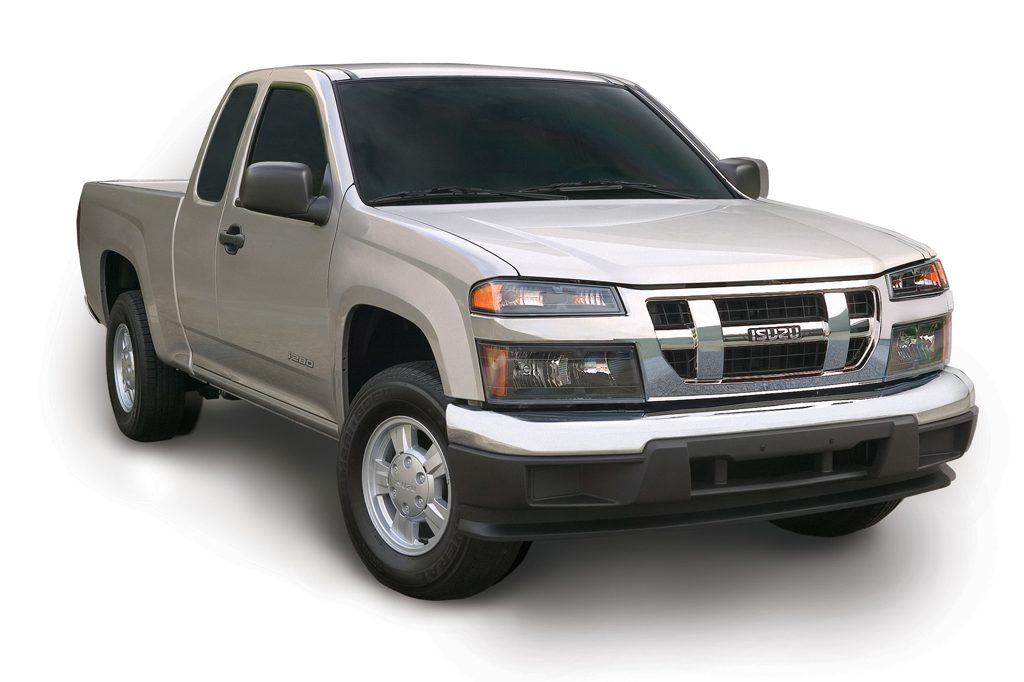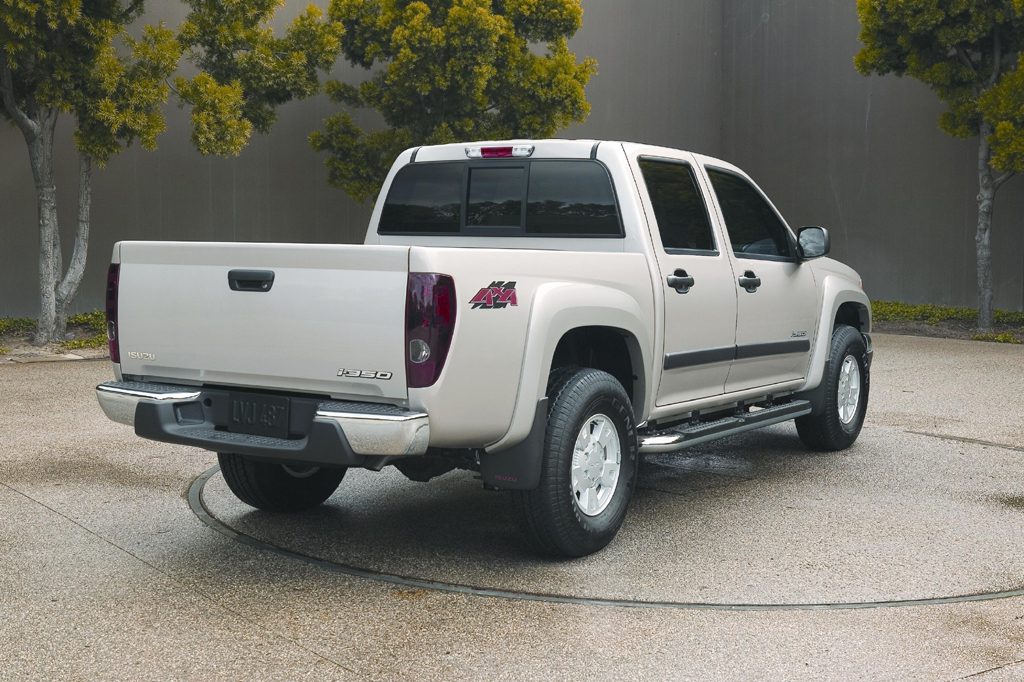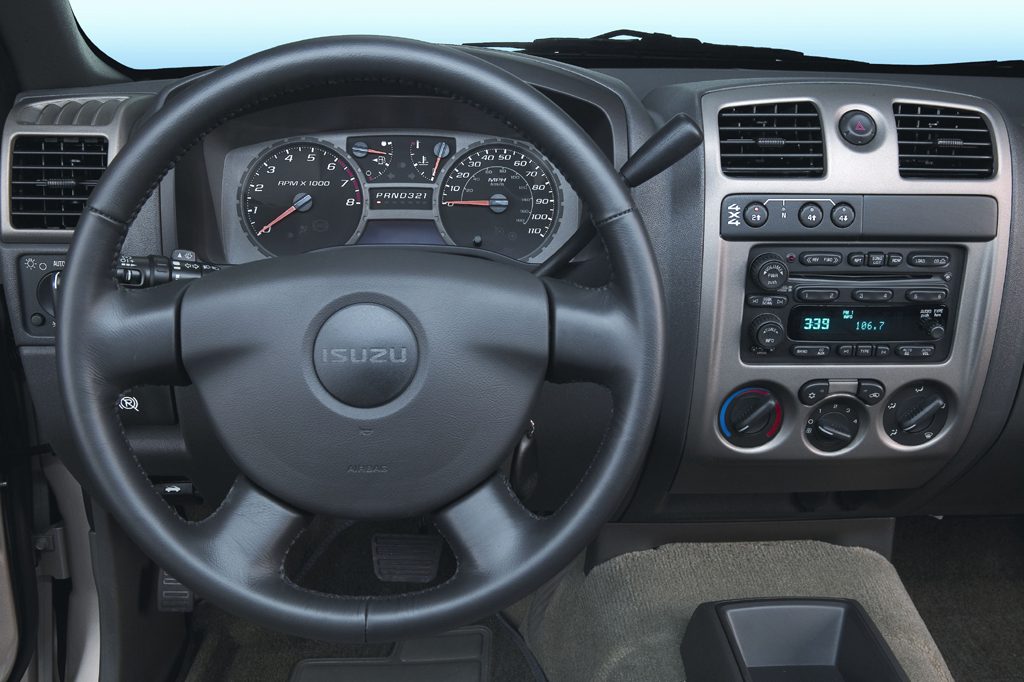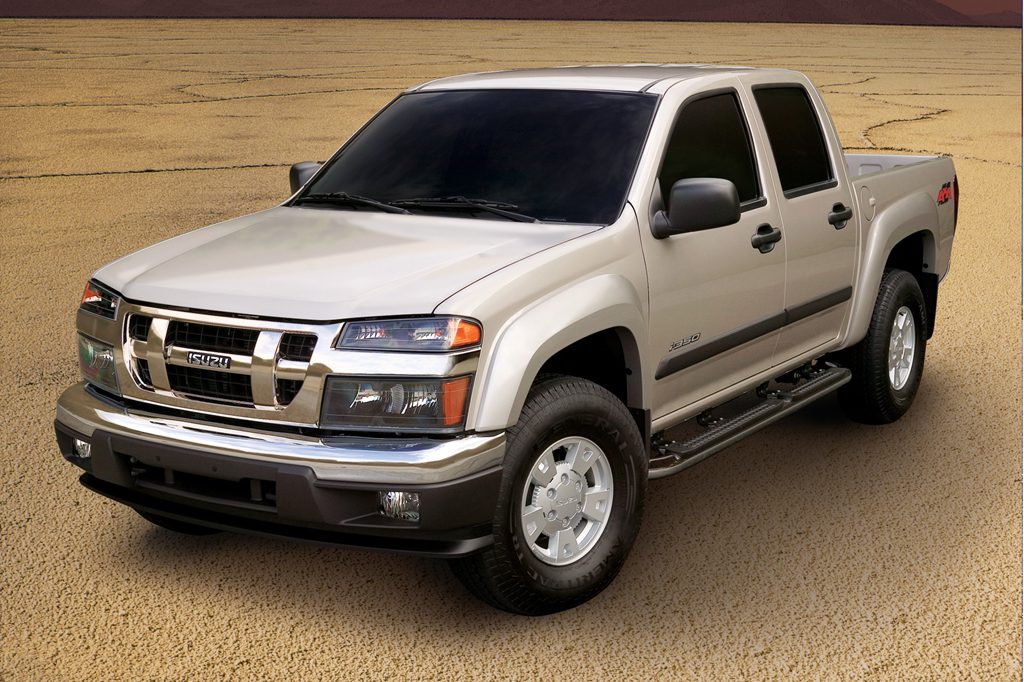| Compact pickup truck; Built in USA |
|
|
| Good condition price range: $5,200 – $12,500* |

2006 Isuzu i-280/i-350

2006 Isuzu i-280/i-350

2006 Isuzu i-280/i-350

2006 Isuzu i-280/i-350
| Pros: |
|
| Cons: |
|
Isuzu’s i-Series and the Colorado/Canyon duo focus on light-duty, non-commercial users–assuming that heavy haulers will move up to heavier-duty trucks. Given that mission, these are useful, well-balanced small trucks. Isuzu models share these attributes, but a sparse dealer network and uncertainty about Isuzu’s long-term viability blunt their value. Rather rapid depreciation, compared to a Colorado or Canyon–especially of four-cylinder models–tends to keep used-vehicle prices down.
Overview
After a five-year hiatus, Isuzu returned to the compact pickup segment with trucks based on a design shared with General Motors. Two models were offered: the i-280 and i-350. The i-280 came only with rear-wheel drive and an extended cab, with rear-hinged back doors that did not open independently of the fronts. It had a 175-horsepower four-cylinder engine and a manual or automatic transmission.
The i-350 came only as a four-wheel-drive Crew Cab with a 220-horsepower five-cylinder engine and automatic transmission. Its 4WD system had low-range gearing, but should not be left engaged on dry pavement. Antilock braking was standard. Traction control was available. Head-protecting curtain side airbags covering both seating rows were standard in the i-350, and available for the i-280.
Vinyl floor covering, a vinyl three-passenger front bench seat, and rear jump seats were included with the i-280. Available for the i-280 and standard for the i-350 were carpeting, cloth upholstery, and power windows/locks/mirrors. The i-350 had front bucket seats and a three-passenger rear bench. Optional for the i-350 were heated power front seats and leather upholstery. The i-280 had a six-foot cargo box, while the i-350 had a five-foot box.
Performance and accommodations should mirror those of the Chevrolet Colorado and GMC Canyon. Potential Isuzu buyers might also wish to consider the Dodge Dakota, Ford Ranger, or Toyota Tacoma.
Yearly Updates
| 2007 i-290/i-370 More powerful engines for 2007 prompted a change in model designations. The Chevrolet Colorado and GMC Canyon got the same engine changes. The four-cylinder version, now a 2.9-liter with 185 horsepower, was renamed the i-290. A 3.7-liter five-cylinder, rated at 242 horsepower, went into the i-370. The i-290 came only in extended-cab form, but the i-370 could be a 2WD extended cab, or a crew cab with available 4WD. |
| 2008 i-290/i-370 The 2008 Isuzu i-290 and i-370 pickups got simplified option packages. Note that Isuzu announced it will discontinue sales of light-duty vehicles in North America during calendar 2009. |
